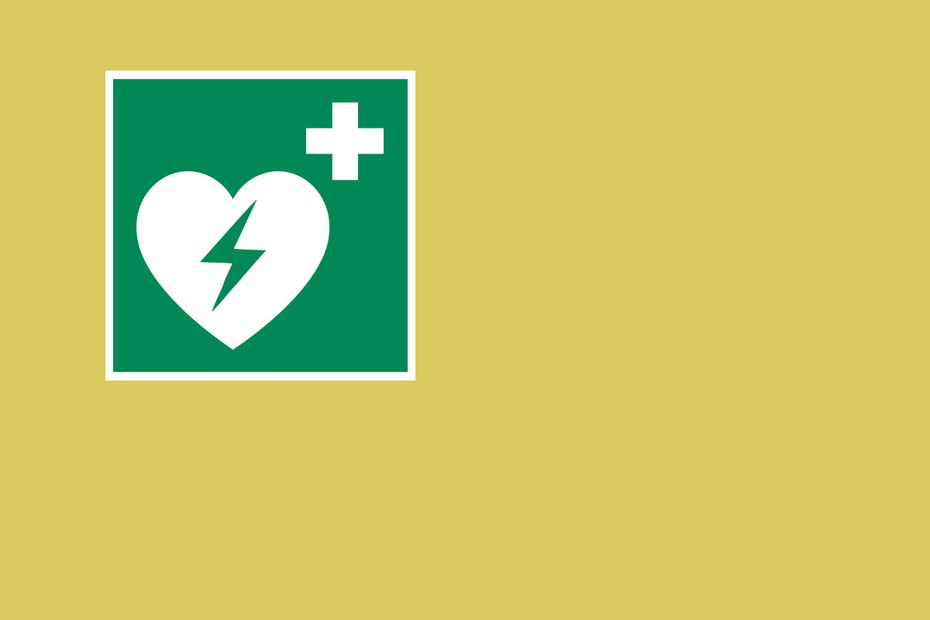Please note: this text has been already published in 2018 in german language at Freitag-Blog.
The upcoming return of my leased car makes me sleep restlessly. What if a disproportionately high bill were to spill into the summer slump? The car detailer has a heart for sorrowful vehicle returners. My joy is therefore great as the processing costs prove to be moderate. But instead of giving me the bill, he pulls up his arm and points directly behind me. There, there lies somebody! Yeah right, I think smugly, who should it be here, in this car-dominated industrial sector... oh! ... I think while turning around and I see a person lying face down on the asphalt.
Every year, more than 50,000 people in Germany suffer an OOHCA. This crude abbreviation stands for Out of Hospital Cardiac Arrest: a sudden cardiac arrest, which happens outside of a hospital. It means certain death for nine out of ten people in this country. Despite our perfect medical infrastructure. Or is it precisely because of it? Most people smile in an embarrassed way when reminded of their last first aid course. One should do it again, it's so important. Very few people actually do it. The author believes that this is essentially also because many rely, albeit unconsciously, on the grandiose medical supply situation. We have legally defined assistance periods, defining the percentage of cases in which a rescue equipment must reach its place of action. And even if now and again there is something wrong with this aid deadline: At least we have one. And the standard of material resources and training is outstandingly and uniformly high compared to many other countries.
Nothing happens here
I see him: Shoes with profile, the body lies limply face down on the ground. No impulse, as would be typical for a short circulatory weakness: A person gets up again after briefly lying flat on the ground. Nothing happens here. We rush the short distance towards the unknown gentleman. He reacts to loud address, complains unasked about pain in the chest and provides a history of his heart. He is still responsive and breathing, but his life is in danger!
The problem with a cardiac arrest is that it does not wait for the perfectly organized rescue services. Because it kills – every second. Every minute that passes, the patient's chance of survival decreases by 10%. After 3-5 minutes, irreversible brain damage occurs. Purely mathematically put, it is over in ten minutes. And that's usually the case, because the rescue services need at least 8-10 minutes to arrive. So not even the often-longed-for rescue helicopter can change this, nor any every so streamlined aid deadline. To stay in world cup language, the ball is in the court of the people standing around the patient. In the guidelines that regulate resuscitation, there is a term for this: ‘Bystander CPR’. This means cardiopulmonary resuscitation (CPR) carried out by bystanders. No matter who they are or whether or not they have completed a first aid course. They should recognize the circulatory arrest and start immediately. Only this is a reliable criterion for patients having a chance of survival.
The emergency call is made, the gentleman is helped into sitting position to make breathing easier for him. The car detailer just gone off to fetch a blanket when the man rolls his eyes; it is quite typical, his head tilts rudely unhindered backwards. He is dying, I can see that; I saw it often enough in my previous job in the emergency services. What follows is something that I did umpteen times while in the emergency service and performed thousands of times in trainings: Over-stretch the head, check the breathing. It happens without my conscious control.
Professor Böttiger is an established man and could therefore professionally slow down. He is Director of the Anesthesiological Clinic of the University Hospital Cologne and Chairman of the German Council for Resuscitation (GRC). But his passion as an emergency physician still breaks through today: When he publicly condemns the ‘recovery position’ from podiums so vehemently that the colleagues in the plenum whisper sheepishly among themselves. The concern whether bystanders perform the resuscitation correctly is a small problem compared to the fact that people do not recognize the drama of the situation and then resort to the well-known ‘recovery position’ for fear of doing something wrong. In such a situation, it is the final death sentence for the patient.
First aiders always have doubts about whether you can really determine a respiratory arrest. You can. The person is unconscious and definitely does not breathe normally: Reanimate! I push up his shirt and start pressing quickly, deeply and firmly on his sternum. Something happens that is a rarity in resuscitation: After a few cardiac pressure massages, the patient shows signs of life, is even responsive again. He has, again such an abbreviation, a ROSC: Return of spontaneous circulation.
Everything could be so simple
Böttiger stands for resuscitation and defends it most vigorously. He is a doctor who knows what is important. Basics. First aiders only need their own hands, he preaches, when lay defibrillators (AED) are once again held up as the panacea. These have their purpose too, but do not replace cardiopulmonary resuscitation. And this essentially consists of a high-quality, continuous cardiac pressure massage. Everything could be so simple: Detection of circulatory arrest, emergency call, possibly with instructions from the dispatcher and then carrying out the cardiac pressure massage. If the helper is confident to do so, he can even try mouth-to-mouth breathing under the guidance of the dispatcher.
The person in front of us is nevertheless in danger of death, he has a severe posterior wall infarction, as the ECG will show later. Whether he will survive is questionable. I will probably never know – data protection rules. Resuscitating is always a stressful situation; you are witnessing the potential death of a person, are the last one he saw and spoke to. Unlike in the rescue services, as a ‘bystander* you lack the security of the system: no control centre, no team, no vehicle, no material. It is incredibly lonely, it overwhelms, makes you think.
The reservations in the population are great; first aid has not yet arrived in schools. These are all topics that Böttiger has taken on. He brings first aid to schools, organizes resuscitation weeks and thus tries to bring the topic into society. For only society can pull itself out of the vortex of death if occasion arises. The rate of amateur resuscitation is increasing, also because resuscitations within the rescue services are successively evaluated and thus finally more valid figures can be presented. The German Resuscitation Register now presents new figures that are at least somewhat encouraging. In 2010, the ratio was a meagre 14% and rose consistently to 42% by 2017. Other countries outbid this by sometimes up to 75%. We should not rejoice too early. It's still less than 50%.
Evil tongues say that there are other causes of death that need to be addressed more urgently. From a purely numerical point of view, this may be true, but the person I successfully reanimated back in May is alive again. I met him four days later. He was conscious, fit, able to walk and had no, absolutely no secondary damage. It feels like a miracle and is solely owing to the fact of the immediate detection of cardiac arrest and application of cardiac pressure massages. He will now always celebrate his second birthday in May. Considering this, how important are other figures?
Jan C. Behmann is a freelance author from Frankfurt am Main. He is the holder of an authorized department for training and further education in first aid, as well as the author of a recognized first aid textbook. He worked full-time as a paramedic in the Emergency Medical Services for several years. The author indicates that there is no conflict of interest






Was ist Ihre Meinung?
Kommentare einblendenDiskutieren Sie mit.